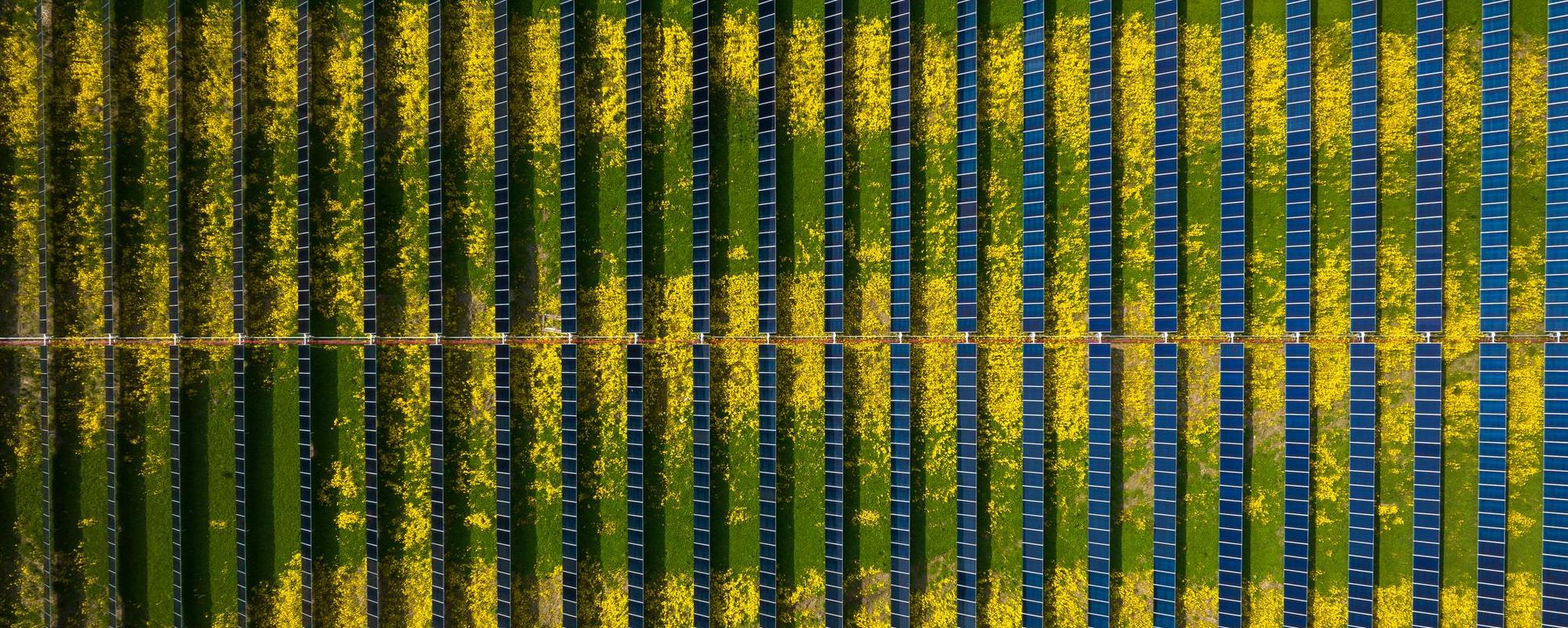Sowing seeds of sustainability: Our approach to supporting pollinators and agriculture
Lightsource bp firmly believes that renewable energy and environmental stewardship go hand in hand. One of the ways we demonstrate this commitment is through the thoughtful cultivation of pollinator habitats and native vegetation on our solar sites.
So, as spring blossoms in the northern hemisphere, it’s the perfect time to plant as well as to enjoy the fruits of previous years’ labours.
Pollinators under stress
Pollinators provide a number of valuable services to nature. They also underpin our food supplies. The UN Food and Agriculture Organization (FAO) estimates that 75 percent of the crops we grow are partially dependent on pollinators.
But these insects are under stress from habitat loss, climate change-related impacts and the use of pesticides. The extent of pollinator loss is difficult to measure comprehensively but falling crop yields and the poorer functioning of those ecosystems are widely observed.
Working together to address decline
We work with our landlords and other partners to address this decline and deliver benefits for our agricultural stakeholders, local communities and nature.
One of the ways we do this is by creating a detailed vegetation plan in partnership with local and regional seed suppliers, conservationists, certified crop advisors and agronomists.
A typical mix of plant species at an established Lightsource bp solar farm will include numerous species of grasses and flowers. This helps our sustainable energy assets serve as sanctuaries for bees, butterflies, birds, and other pollinators in addition to generating renewable electricity.
20-fold increase in native bees
Healthy pollinator populations can also boost farmers’ yields. According to a five-year study from Argonne National Laboratory, in the United States, solar farms with habitat restoration can significantly boost populations of pollinator insects on the land, with native bees showing a 20-fold increase on their test sites. They also found that the insects visited nearby crop fields, making neighbouring farmland more productive! The researchers concluded that these findings “provide support for solar-pollinator habitat as a feasible conservation practice to safeguard biodiversity and increase food security in agricultural landscapes.”
By establishing pollinator-friendly habitats, we’re safeguarding essential species but also promoting the health and resilience of surrounding ecosystems, as well as helping to support agriculture with the, often essential, pollinator populations required.
Case study: Honeysuckle Solar, Indiana, USA
The 188MWdc Honeysuckle Solar project, currently under construction near South Bend, Indiana, in the USA, will feature pollinator habitat implemented across more than 90% of the land on- site. Lightsource bp and our partners have developed and planted two distinct seed mixes to achieve this.
The first mix, planted across the full solar array, contains 25 species of grasses and flowering plants. This “low-density” habitat will grow under and around the solar panels, featuring flowers that bloom from spring through fall. These plants were chosen to provide high-value food and shelter for pollinators, without growing taller than the bottoms of the solar panels.
The second seed mix has been planted on more than 20 acres around the site perimeter, unconstrained by height requirements. With 50 unique species, this area will become a more traditional “high-density” pollinator garden. This mix was developed and provided by our partners at the Bee & Butterfly Habitat Fund, an NGO on a mission to increase and improve critical pollinator habitat in the United States.
In addition to boosting pollinator populations, the vegetation at Honeysuckle Solar will support co-located agriculture with solar grazing and potentially beekeeping, providing nutritious forage for both sheep and honeybees.
Our efforts extend beyond individual projects; they reflect a broader commitment to sustainability and environmental stewardship as well as our partners in agriculture.
Discover more about Lightsource bp’s environmental stewardship initiatives.
Latest news
26 Jun, 2025
Lightsource bp signs first PPA in Taiwan with Star Trade for pilot fishery solar project
Lightsource bp has signed a power purchase agreement (PPA) with Star Trade for its Budai solar project in Taiwan.
10 Jun, 2025
Lightsource bp secures financing on its first project in Taiwan and its pilot fishery solar project globally
Lightsource bp, a leading developer and manager of global onshore renewable energy projects, has secured financing for its 115MWp fishery solar project in Taiwan.
05 Jun, 2025
PPAs: a key lever for the energy transition in Europe
Watch our webinar to learn about how sustainable PPAs are emerging as a key commercial solution for corporate buyers.




